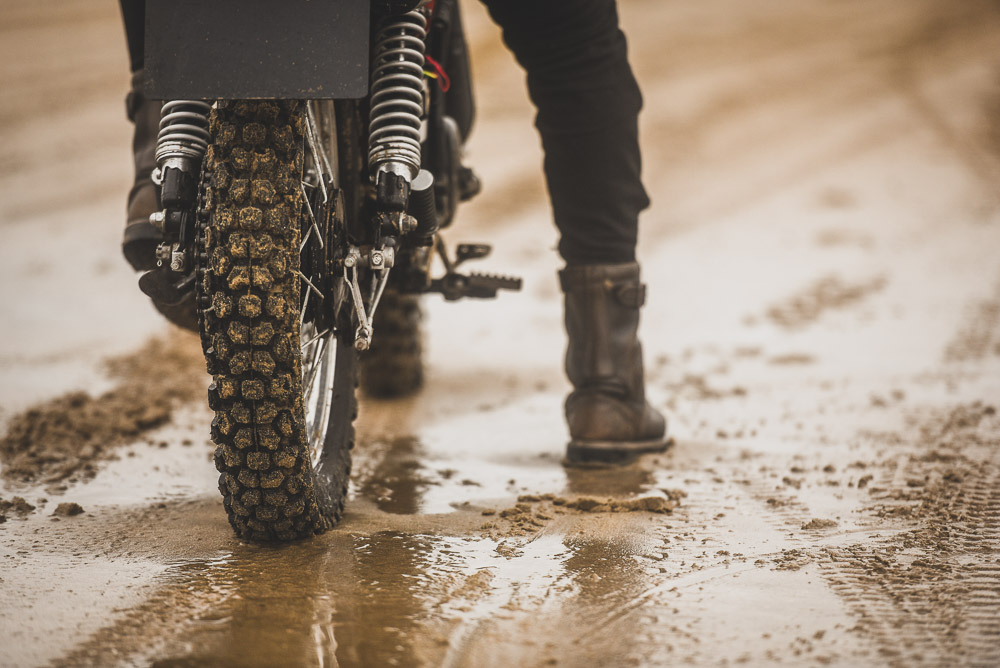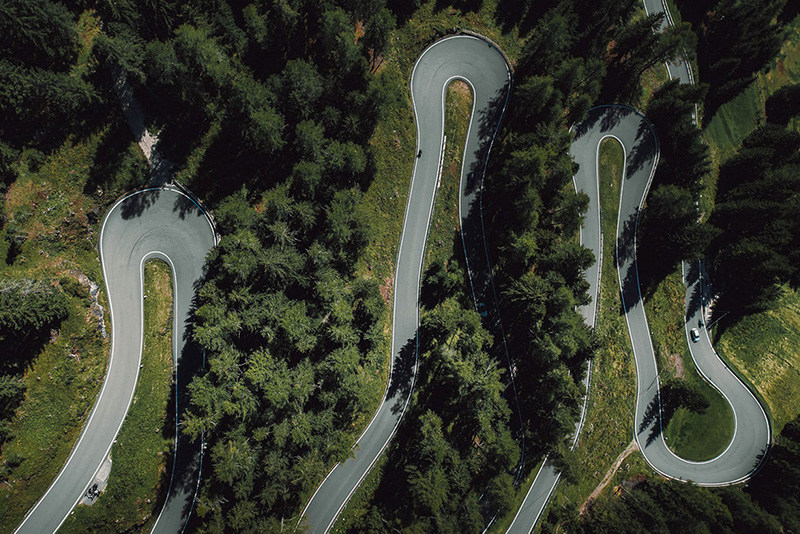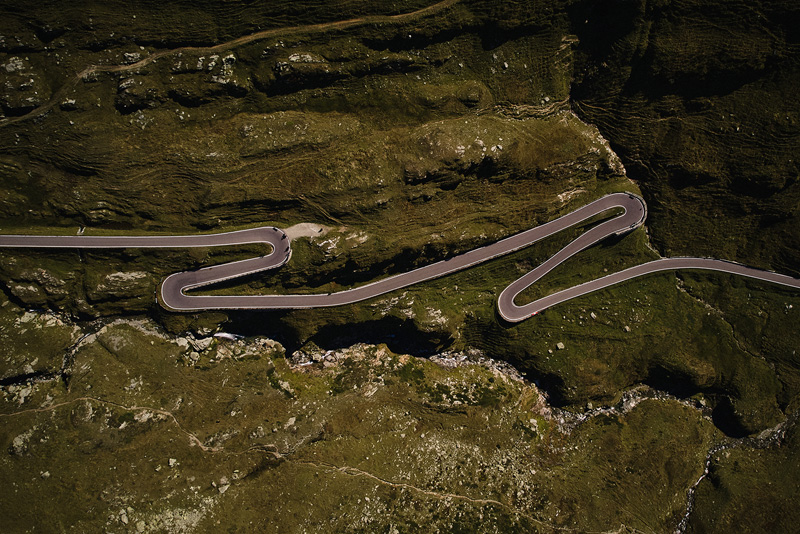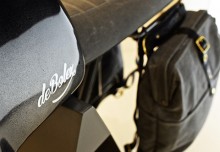RACE
Keep it Clean
The Malle Mile Beach Race Environmental Report
by The INTERNATIONAL ESTUARINE & COASTAL SPECIALISTS
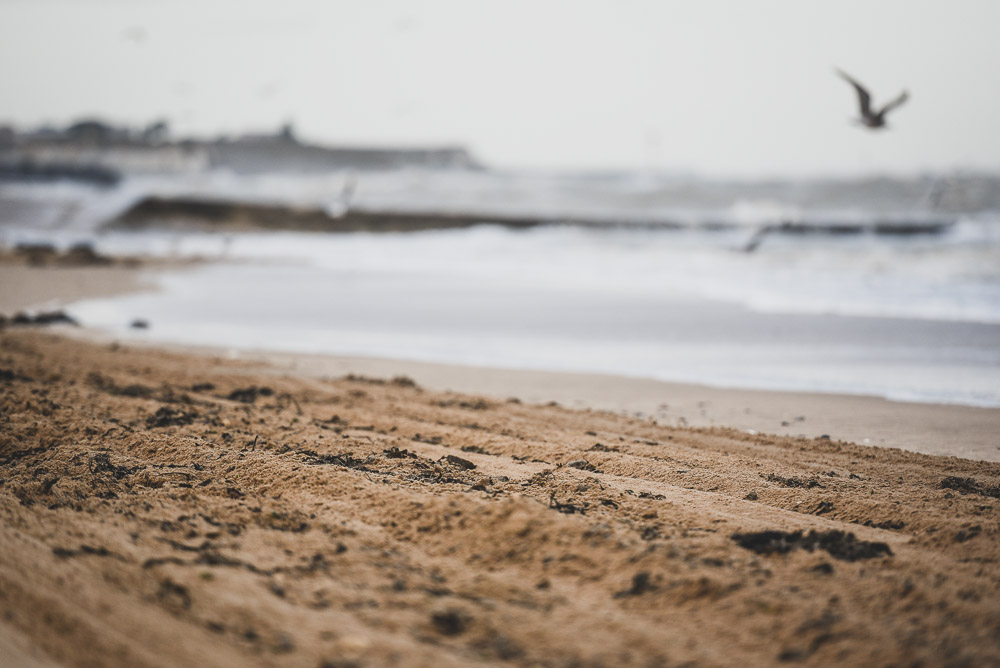
Introduction
With every project and adventure that Malle embarks on we are always ensuring our work creates a positive impact for the Malle community and for the planet. We know that the more we inspire our community to travel and explore the world by foot and on two wheels, the more respect we have for the places we travel and the more we want to protect it for the future. The Malle Beach Race is now in its fifth year and has become a great success for the town of Margate, but we wanted to dig a little deeper (literally) to ensure that this annual beach race event not only has a positive impact on the wider community, the guests, riders, friends and families that attend the event each year, but to ensure it has a positive effect on the beach race environment.
To this aim, we instigated a professional Marine Ecology report, to give us all the facts and to enable us to create a great event that benefits people and planet now and in the future.
Summary Report
PROFESSOR MICHAEL ELLIOTT BSc (Hons, Lond.), PhD (Stirling), FRSB, CBiol., FRGS, FMBA
Position: Emeritus Professor of Estuarine & Coastal Sciences, School of Environmental Sciences, University of Hull.
Director, International Estuarine & Coastal Specialists (IECS) Ltd.
1st May 2023



Preamble
All human activities have the potential to create environmental hazards and risks to the natural environment. Those hazards may be actions which are either natural or human-induced but they become risks when they endanger aspects of value to society such as quality of environment, quality of life and welfare, reduction in economic benefits, etc. It is emphasised that many risks come from materials added to the environment – merely adding materials is regarded as contamination, whereas if those materials cause harm to humans or other organisms then this is regarded as pollution. The essence of environmental management is to aim to reduce and remove or at least mitigate and/or compensate for damage done to the natural environment by these risks and hazards.
The organisers of the annual Malle Margate Beach Race are taking an environmentally-aware approach and so wish to consider and address any potential or actual environmental effects. To this effect, there are two areas to explore and understand better: (i) regarding any effects of fumes near the sand, and (ii) effects on “microscopic organisms by compaction” – it is assumed here that this refers to the macroscopic organisms (those seen with the naked eye) rather than microbes. However, it is a truism of environmental management that if the public think there is a problem then by definition there is a problem, which has to be countered, solved or accepted.
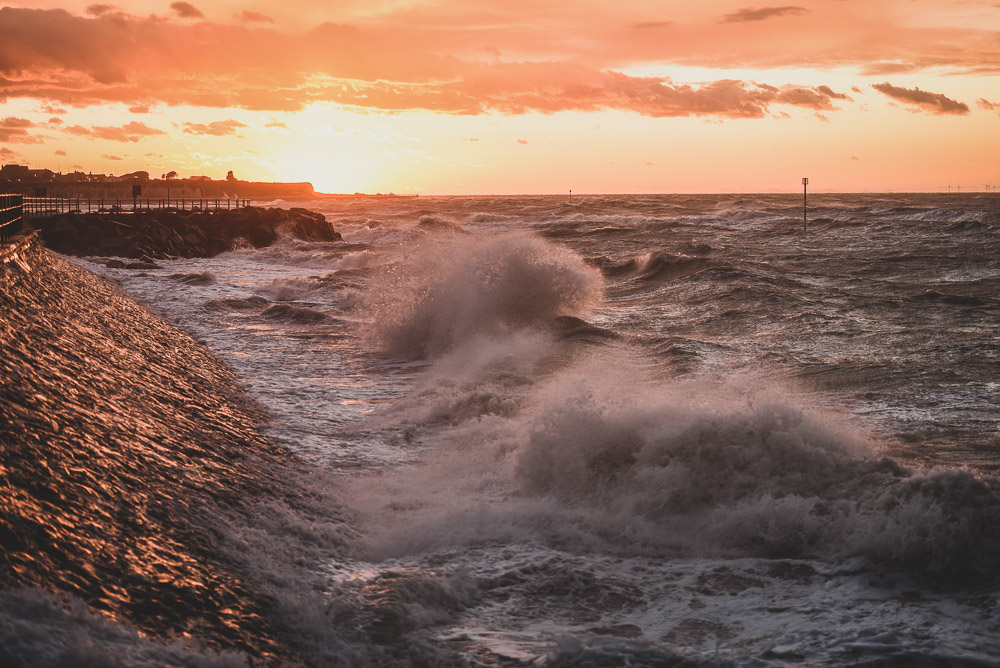
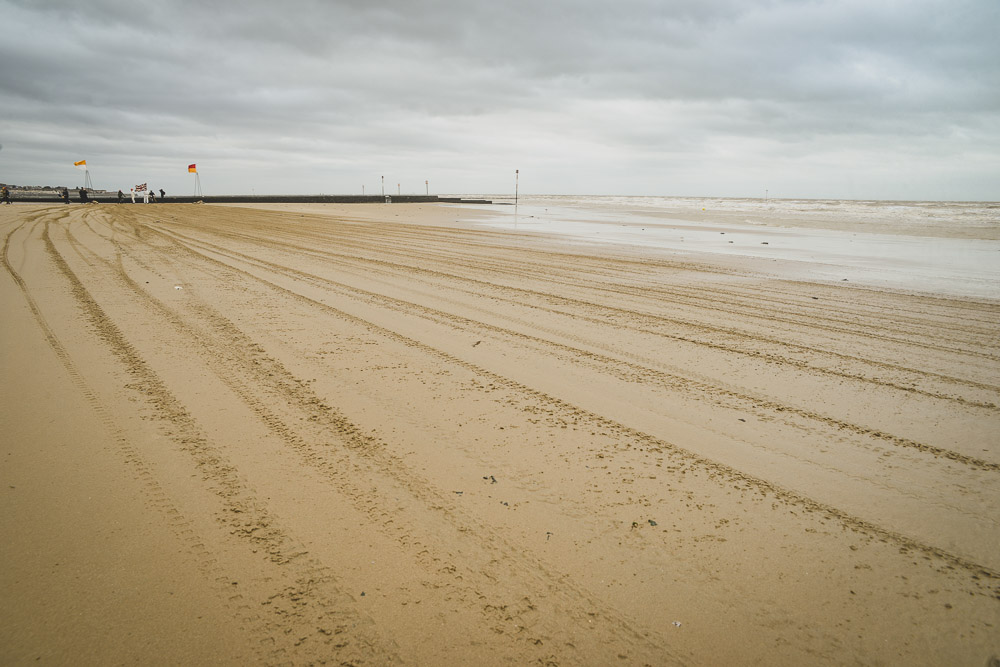
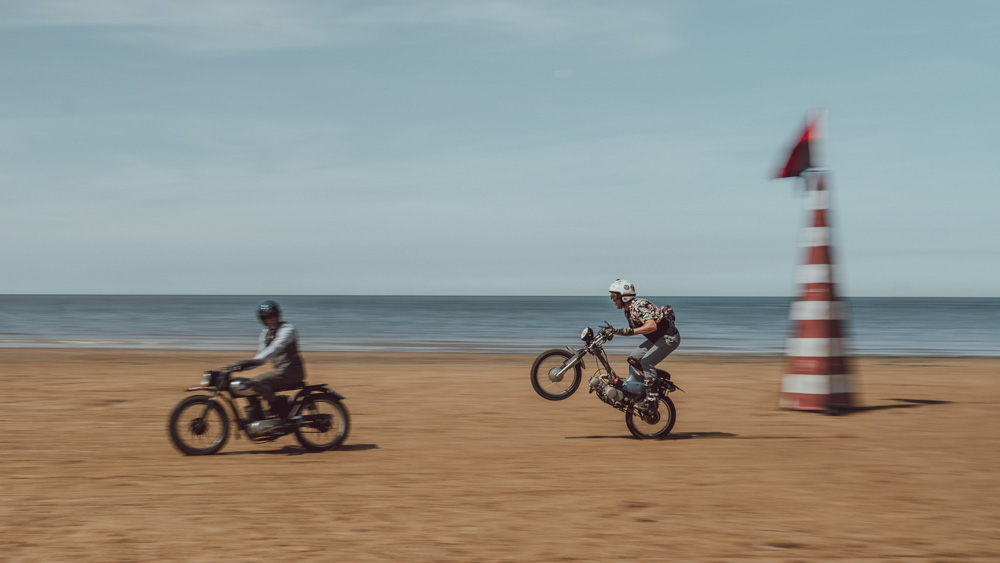
The beach habitat
Sandy beaches are regarded as high energy environments, created by the action of the tides and waves and with a supply of sand which settles in areas as allowed for by the water movements. Margate beach has an open exposed shore and, with windy conditions, the area is tide and wave-dominated.
Beaches are accepted as being mobile in that the sediment will get disturbed by the wave swash and backwash and often moved alongshore by the water movements. Hence, with each incoming and outgoing tide, twice a day in most NW European areas, the surface sediment gets disturbed and then resettles. As such, any surface features on the sand are then quickly removed. The mobile nature of the sediment in turn determines what organisms can live in the sediment – whereas organisms can live on the surface of rocks, in this case they are mostly burrowing in the sand, forming tubes using sand grains or living between the sand grain. The burrows and tubes allow them to live at varying depths and take water into their burrows. The organisms living amongst the sand grains when the tide is out often move into the water column to feed when the beach is covered by the tide. Percolation of water through the beach allows the organisms in the sand to have an oxygen and food supply. Organisms may live on the sand, such as mussels, and those in the sand will be obvious through surface features such as casts, holes and tubes. There are changes in the organism types and quantity with tidal height – the mid to lower beach levels will have more organisms and more types, the upper shore will be relatively poor especially if it drains rapidly, and at the strand line (the furthest that the tide reaches) there will be many insects and small crustaceans as long as there is the washed- up organic matter to sustain them. It is of note that the sandy-beach organisms are adapted to living in mobile sediments and the lack of organic matter may means few organisms are present.
The beach appears to be in two sections. There is dry sand at the high-water mark, above the strandline where the water-table is deep or the sand dries out creating wind-blown sand. The lower beach will be wetted on each tide and therefore is more suitable for organisms living in the sand. Although there has not been a rigorous survey of the beach ecological features, anecdotally there is no sign of organisms. With the right conditions there could be sand-mason worms (Lanice sp.) shown as tubes built of sand grains, or lugworms (Arenicola sp.) shown by faecal casts on the surface; there may also be cockles (Cerastoderma sp.) living in the sand in the lower areas and mussels (Mytilus edulis) if there are stones of other shells to which their shells can be fixed.
The beach also has several other uses and users, notably for recreation (walking, dog walking, beach- fishing, wind surfing, etc.). There does not appear to be any nature designations in the area such as a Site of Special Scientific Interest (SSSI) or other nature designations for the fauna or flora or geological interest.

THE MOTORCYCLE BEACH RACE ACTIVITY
All human activities on any beach leave a footprint, the area where the activity takes place, which in turn creates pressures, the mechanism leading to the effects on the natural ecology and on human uses of the beach. Therefore, the first challenge is to describe the activity and the potential ways in which it will create pressures and effects. These can be summarised in the table below. The organisers indicate that the race area is approx. 218 m x 12 m wide and the local authority website indicates that the beach is cleaned daily in the tourist season.
The Margate motorcycle beach race has the potential to create: |
Impact |
Reduction or mitigation measures |
|---|---|---|
|
Noise to scare organisms such as seabirds; |
High chance of noise but no seabirds other than gulls are likely to be in the area; shore- feeding birds such as terns, turnstones, oystercatchers will be present as long as there is no human disturbance and there is food present; birds that are displaced will rapidly return although on a public beach the birds may already have been scared away by the town. |
It is expected that no birds other than gulls are likely to be affected – they will stay away during the races and if there is a large public presence. reduction using electric bikes; ensure the activities are away from any any nature areas. |
|
Litter as both an aesthetic problem and which could be ingested by seabirds and fishes or entangle them; |
In moderate amounts depending on human behaviour although the beach will also receive litter from the adjacent road and the tide/sea. |
Beach cleaning by the local council and good practice of beach sweeping by the race organisers/marshals. |
|
Sediment disturbance which will change the natural look of the beach and may increase erosion; |
Will be most obvious along the race track where dry sand will get disturbed and then this will be resuspended on the next incoming tide; this is similar to the beach cleaning by the local council, with large tractors. |
Accepted as a local change by the council and the beach will recover quickly on successive tides; the duration of the change could be recorded by drone footage after the following one or two high tide periods. |
|
Oil residues as contamination which creates pollution if it is left and could harm organisms through ingestion; |
Moderate in small patches with lighter fractions evaporating and getting degraded by sunlight; potential to seep into the sediment where it could persist; potential for organisms to ingest and so pass the oil to their predators. |
Remove any spills immediately, clean bikes and other equipment over a receptacle and transport the residue elsewhere; remove the sand with any oil spilt and dispose of safely. |
|
Vapour from the exhausts; |
Minor impact, depending on the weather these will disperse quickly. |
Assume they will get dispersed by moderate winds. |
|
Emissions from the motorcycle engine; |
Moderate impact but not-detectable from other emissions in the area. |
These will disperse with normal weather conditions; minimise with electric vehicles. |
|
Compaction of the sand which could make the sediment unsuitable for any animals living within it; |
Minor impact on the entire area and moderate impact along the narrow race track and where the spectators/organisers are standing; a restricted area will be affected. |
Will be reversed by council beach cleaning and with the successive incoming tide. |
|
Hard structures placed in or on the sand; |
Very small areas affected and for a very short duration. |
Will be removed by the organisers as soon as possible. |
|
Interference with the other uses and users of the area, such as walking and dog-walking, swimming, etc. |
Potentially large area affected but for a very short time. 40% of the beach is still available for use by the public. |
Area will revert to normal once the race is over; crowd management will minimise the effects. |
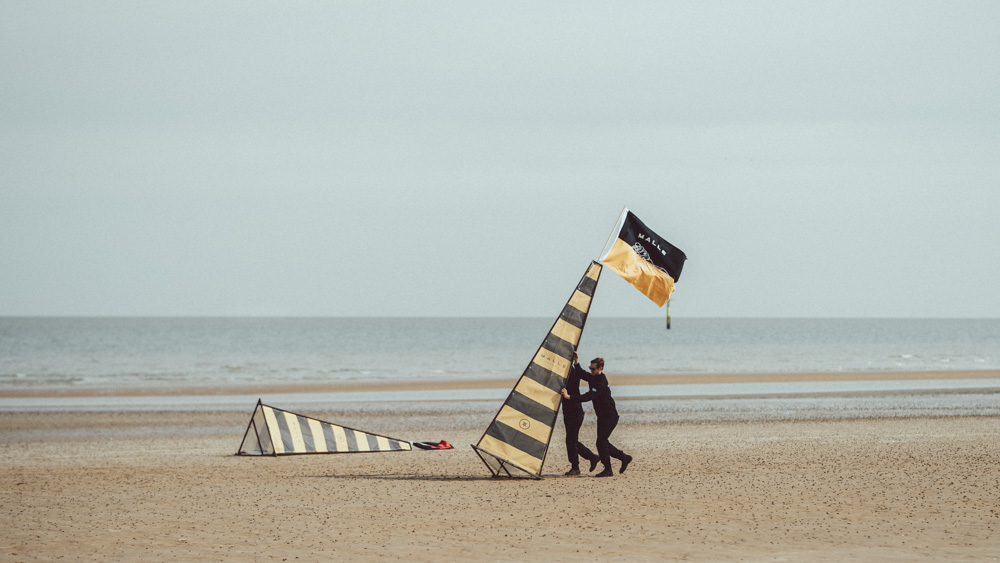
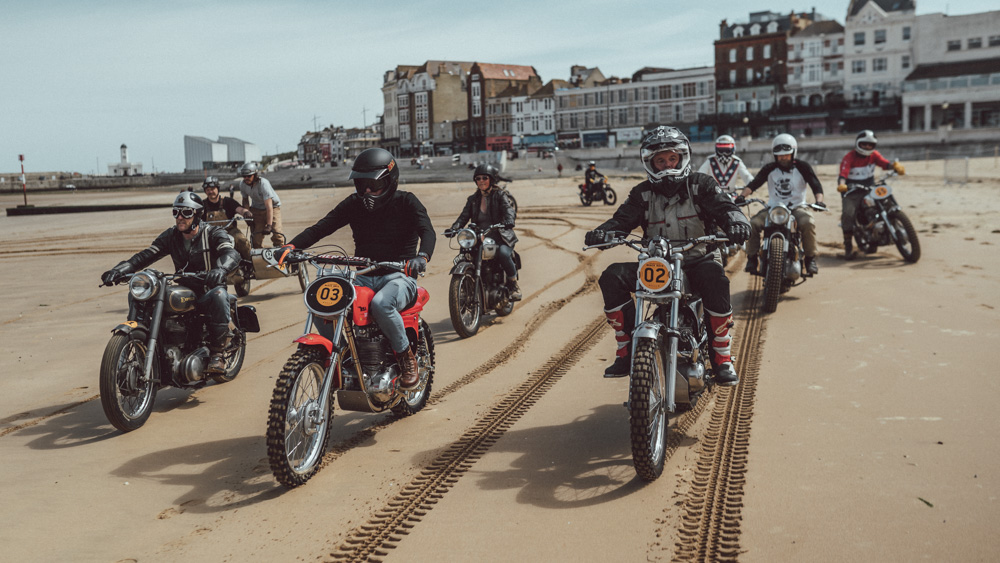
Confounding factors
Council beach cleaning is designed to remove litter but it also removes organic matter such as washed up seaweed, especially at the strand line, the extent reached by the tide; this leads to a ‘sterile beach’ with little biota given that the organisms require organic matter and detritus to survive. Beach cleaning not only removes the organic matter but also turns over the surface sediment to a few cm deep.
Mitigation and Solutions
The mitigation measures are given in the table above. Adopting a good practice code-of-conduct will minimise and remove the effects indicated above. Monitoring by walking and drone footage before and after the race and after the following high tide period would show whether any of the effects are residual and likely to last. The wave energy will redistribute all sand that has been moved by the beach activities.
Operational measures – the organisers indicate that the bikes are spray-cleaned before and after the race to remove any oils and sand are checked by marshals. The organisers have an informal code of conduct but this could be formalised as has been developed in other similar events (e.g. Skegness, Bognor, etc.). The organisers indicate that following the next tides, there is no evidence of tyre marks. However, aerial photographs show the persistence of beach cleaning tractor movement, presumably prior to the next successive tide. The organisers indicate that, for safety reasons and to prevent accidents and damage, the marshals remove any obstacles or stones, such as timber, plastic or bricks that are washed in by the tide. It is suggested that the organisers obtain further surface photograph and aerial drone photograph evidence of the pre-, during and post-race conditions, to maintain that the beach is well looked after pre-, during and post-race weekend.
Experience in other areas:
Thanet has a well-publicised beach-cleaning process. This work includes: ensuring sufficient beach refuse bins; litter being collected daily by hand; using tractors with specialist machinery to clean the larger beaches; penalties for poor public behaviour; dog restrictions; removing seaweed from the beach as necessary.

